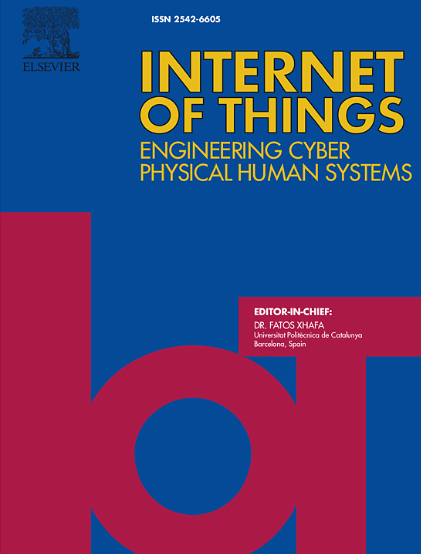物联网生态系统中可解释的三向神经网络入侵检测方法
IF 7.6
3区 计算机科学
Q1 COMPUTER SCIENCE, INFORMATION SYSTEMS
引用次数: 0
摘要
深度神经网络(dnn)在入侵检测方面已经显示出巨大的潜力;然而,由于其概率分类机制的确定性,数据中固有的不确定性往往会导致错误警报。在物联网环境中,这可能会影响系统可靠性。此外,大多数基于dnn的方法不能提供透明和可解释的模型输出。迫切需要一个安全、可靠、准确的框架来保护物联网系统。为了填补这一空白,本文介绍了一种新颖的、可解释的三向神经网络方法,称为Ex3WNN。我们使用博弈论粗糙集(GTRS)在深度神经网络的最后一层引入了一个3WC机制。这允许模型通过区分自信的决策和需要进一步解释的决策来更智能地处理不确定的情况。通过将预测分为攻击类、可疑类(不确定)和正常类,3WC有助于管理不确定性,确保标记不明确的案例以供进一步分析,而不是错误分类。采用GTRS框架确定最优决策阈值,在实现通用性和准确性之间的权衡的同时导出最优决策阈值。该方法提高了检测的准确性和可靠性。引入可疑区域可以大大减少错误警报,显著提高入侵检测系统的可靠性、安全性和置信度。此外,我们利用可解释的AI (XAI)技术来提供可解释和透明的模型输出。在四个相关的综合数据集上的实验结果表明,该方法优于现有的基线。本文章由计算机程序翻译,如有差异,请以英文原文为准。
An explainable three-way neural network approach for intrusion detection in IoT ecosystem
Deep neural networks (DNNs) have demonstrated remarkable potential in intrusion detection; however, the inherent uncertainty in the data often results in false alerts due to the deterministic nature of their probabilistic classification mechanism. In IoT environments, this can affect system reliability. Moreover, most of the DNN-based methods do not provide a transparent and interpretable output of the model. A secure, reliable, and accurate framework is urgently required to protect IoT systems. To fill this gap, this article introduces a novel, explainable three-way neural network approach called Ex3WNN. We introduce a 3WC mechanism in the final layer of the DNN using Game-theoretic Rough Sets (GTRS). This allows the model to handle uncertain cases more intelligently by distinguishing between confident decisions and those requiring further interpretation. By categorizing predictions into attack, suspicious (uncertain), and normal classes, 3WC helps manage uncertainty, ensuring that ambiguous cases are flagged for further analysis rather than misclassified. The GTRS framework is employed to determine optimal decision thresholds, which are derived while achieving the trade-off between generality and accuracy. This approach enhances both detection accuracy and reliability. Incorporating the suspicious region can considerably reduce false alerts and significantly enhance the reliability, security, and confidence of the intrusion detection system (IDS). Furthermore, we utilize the eXplainable AI (XAI) techniques to provide an interpretable and transparent model’s output. The experimental results from four relevant and comprehensive datasets show that the proposed method outperformed existing baselines.
求助全文
通过发布文献求助,成功后即可免费获取论文全文。
去求助
来源期刊

Internet of Things
Multiple-
CiteScore
3.60
自引率
5.10%
发文量
115
审稿时长
37 days
期刊介绍:
Internet of Things; Engineering Cyber Physical Human Systems is a comprehensive journal encouraging cross collaboration between researchers, engineers and practitioners in the field of IoT & Cyber Physical Human Systems. The journal offers a unique platform to exchange scientific information on the entire breadth of technology, science, and societal applications of the IoT.
The journal will place a high priority on timely publication, and provide a home for high quality.
Furthermore, IOT is interested in publishing topical Special Issues on any aspect of IOT.
 求助内容:
求助内容: 应助结果提醒方式:
应助结果提醒方式:


